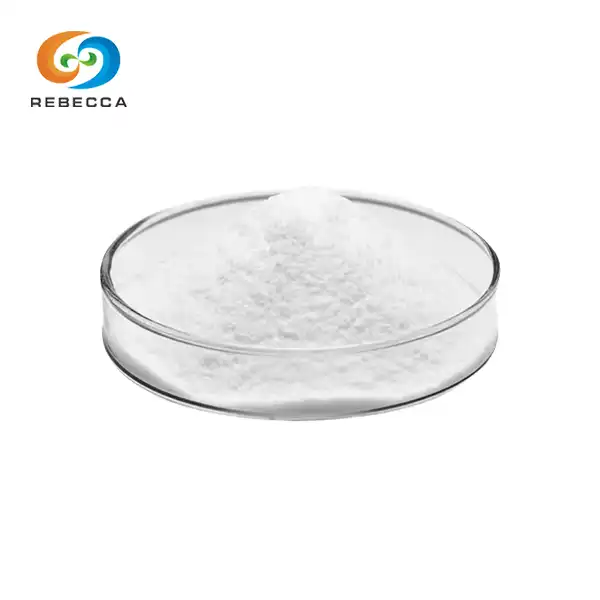What is the antidepressant mechanism of hyperforin extract?
The quest to understand how natural compounds alleviate depression has led researchers to investigate one of nature's antidepressants: hyperforin extract. This compound, isolated from St. John's wort (Hypericum perforatum), has challenged conventional understanding of antidepressant mechanisms through its unique multi-target approach to mood regulation. Unlike traditional antidepressants that typically focus on single neurotransmitter systems, hyperforin demonstrates a sophisticated interplay of mechanisms that work synergistically to combat depressive symptoms.

Hyperforin Extract
English name: Hypericum perforatum extract
Latin Name: Hypericum perforatum L.
CAS No.: 548-04-9
Molecular forula:C30H16O8
Molecular Weight: 504.45
Active ingredients: Hypericins, Hyperforin
Specification: 0.3% Hypericins UV; 0.3% Hypericin HPLC; 3%, 98% Hyperforin HPLC
Use Part : Whole herbs
Appearance: Brown powder
Mesh size:80 Mesh
Test Method: HPLC/UV
Inhibition of Neurotransmitter Reuptake
The primary antidepressant mechanism of hyperforin extract centers on its remarkable ability to inhibit the reuptake of multiple neurotransmitters simultaneously. Research has demonstrated that hyperforin acts as a reuptake inhibitor of monoamines, particularly affecting serotonin, norepinephrine, and dopamine, with IC50 values of 0.05–0.10 μg/mL for all compounds. This broad-spectrum activity distinguishes hyperforin from conventional antidepressants that typically target specific neurotransmitter systems.
What makes hyperforin extract particularly fascinating is its non-selective approach to neurotransmitter reuptake inhibition. The compound not only inhibits the neuronal uptake of serotonin, norepinephrine, and dopamine like many other antidepressants, but also inhibits GABA and L-glutamate uptake. This comprehensive inhibition affects both excitatory and inhibitory neurotransmitter systems, creating a more balanced neurochemical environment that may contribute to its therapeutic efficacy.
Unique Reuptake Mechanism: Unlike conventional antidepressants that competitively bind to specific transporters, hyperforin extract operates through a novel mechanism that affects transporter function indirectly, resulting in broad-spectrum neurotransmitter reuptake inhibition.
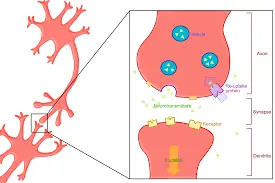
The kinetic analysis of hyperforin's serotonin reuptake inhibition reveals important mechanistic details that differentiate it from synthetic antidepressants. Studies using Michaelis-Menten kinetics have shown that hyperforin induces a decrease in Vmax by more than 50% while only slightly decreasing Km, indicating mainly noncompetitive inhibition. This noncompetitive inhibition pattern suggests that hyperforin doesn't directly compete with serotonin for binding sites on the transporter, but rather alters the transporter's function through alternative mechanisms.
The mechanism underlying this broad-spectrum reuptake inhibition involves hyperforin's effect on intracellular ion concentrations. Research has revealed that hyperforin inhibits serotonin uptake by elevating free intracellular Na+, which disrupts the normal functioning of neurotransmitter transporters that depend on sodium gradients for their operation. This ionic mechanism explains how a single compound can simultaneously affect multiple different neurotransmitter systems.
The therapeutic implications of this multi-target reuptake inhibition are significant for understanding hyperforin's antidepressant efficacy. By simultaneously increasing the synaptic availability of serotonin, norepinephrine, dopamine, GABA, and glutamate, hyperforin extract creates a comprehensive neurochemical environment that addresses multiple aspects of mood regulation. This approach may explain why some patients who do not respond adequately to single-target antidepressants may benefit from hyperforin-containing preparations.
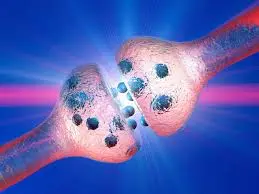
Regulation of Ion Channels
Beyond its effects on neurotransmitter reuptake, hyperforin extract exerts profound antidepressant effects through its regulation of specific ion channels, particularly the transient receptor potential canonical 6 (TRPC6) channels. Recent groundbreaking research has identified TRPC6 as a druggable target for controlling anxious and depressive behavior and as a requirement for hyperforin's antidepressant action. This discovery has opened entirely new perspectives on the molecular mechanisms underlying natural antidepressant activity.
The relationship between hyperforin extract and TRPC6 channels represents a fundamental breakthrough in understanding how botanical compounds can influence mood regulation at the cellular level. Hyperforin modulates intracellular Ca2+ levels by activating Ca2+-conducting non-selective canonical transient receptor potential 6 channel (TRPC6) channels. This calcium modulation is crucial for numerous cellular processes involved in neuronal function, synaptic plasticity, and gene expression.
TRPC6 Channel Discovery: The identification of TRPC6 channels as hyperforin's primary target has revolutionized understanding of natural antidepressant mechanisms and has led to the development of new synthetic compounds that target these same channels for depression treatment.
The specificity of hyperforin's ion channel interactions adds another layer of sophistication to its mechanism of action. Research has demonstrated that hyperforin elevates intracellular Ca2+ concentration by activating diacylglycerol-sensitive TRPC6 channels without activating other isoforms (TRPC1, TRPC3, TRPC4, TRPC5, and TRPC7). This selectivity ensures that hyperforin's effects are targeted and specific, avoiding potential side effects that might arise from non-selective channel activation.
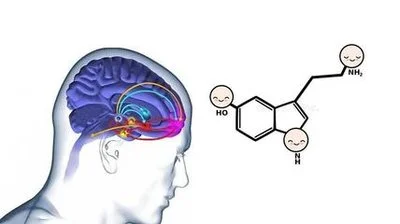
Induction of Neurotrophic Factor Expression
The third major mechanism through which hyperforin extract exerts its antidepressant effects involves the induction of neurotrophic factor expression, particularly brain-derived neurotrophic factor (BDNF). Research has demonstrated that hyperforin stimulates the brain-derived neurotrophic factor (BDNF)/TrkB neurotrophic signaling pathway, adult hippocampal neurogenesis, and brain homeostasis of zinc. This neurotrophic mechanism represents a fundamental aspect of hyperforin's long-term antidepressant effects and its ability to promote neuronal health and resilience.
The induction of BDNF expression by hyperforin extract addresses one of the core neurobiological theories of depression: the neurotrophic hypothesis. This theory suggests that depression results from decreased neurotrophic support leading to neuronal atrophy and reduced neuroplasticity, particularly in mood-regulating brain regions like the hippocampus. By stimulating BDNF production, hyperforin helps restore the neurobiological conditions necessary for optimal neuronal function and mood regulation.

Neuroplasticity Enhancement: Hyperforin's ability to increase BDNF expression promotes neuroplasticity, supports neuronal survival, and facilitates the formation of new neural connections that are essential for recovering from depression and maintaining emotional resilience.
Clinical studies have provided evidence for the practical significance of hyperforin's neurotrophic effects in treating depression. Research using chronic unpredictable mild stress (CUMS) models has evaluated hyperforin's antidepressant activity and documented changes in BDNF and zinc levels. These studies demonstrate that hyperforin's therapeutic effects are associated with measurable increases in neurotrophic factors that correlate with behavioral improvements.
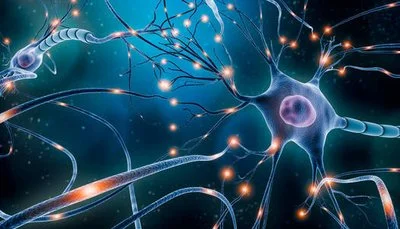
Rebecca: Hyperforin Extract Manufacturer
Rebecca stands as a trusted hyperforin extract supplier, providing pharmaceutical-grade materials that support both research applications and commercial product development. Our hyperforin (CAS No.: 548-04-9) undergoes rigorous quality control processes to ensure consistent concentrations of active ingredients, including hypericins and hyperforin. We maintain precise specifications of 0.3% Hypericins UV, 0.3% Hypericin HPLC, and concentrations of 3% and 98% Hyperforin HPLC, all processed to 80 Mesh particle size for optimal formulation compatibility.
Understanding the delicate nature of hyperforin and its multiple mechanisms of action, Rebecca employs advanced HPLC/UV testing methods to verify the integrity and potency of every batch. Our quality assurance protocols ensure that the complex molecular structures responsible for hyperforin's unique antidepressant mechanisms remain intact throughout processing, storage, and distribution.
The research presented in this article demonstrates that hyperforin's therapeutic value extends far beyond simple neurotransmitter effects, encompassing sophisticated cellular mechanisms that promote neuronal health and resilience. For scientists and product developers working to translate these mechanisms into effective therapeutic applications, Rebecca provides the reliable supply chain and technical expertise necessary for successful outcomes.
As the understanding of hyperforin's antidepressant mechanisms continues to evolve, the importance of working with knowledgeable suppliers who appreciate the scientific complexity becomes increasingly critical. Rebecca's commitment to quality, combined with our understanding of hyperforin's unique properties and therapeutic potential, makes us the preferred partner for demanding applications requiring the highest standards of product consistency and scientific integrity.
For detailed information about our product specifications, analytical data, stability studies, or to place an order for your research or commercial applications, please reach out to us at information@sxrebecca.com. Our technical team is prepared to support your specific requirements and help you successfully implement hyperforin in your therapeutic applications.
References
Multiple research studies demonstrate hyperforin's broad-spectrum neurotransmitter reuptake inhibition through sodium-dependent mechanisms (Journal of Pharmacology and Experimental Therapeutics, 1999; PubMed indexed studies).
TRPC6 channel research from Nature Molecular Psychiatry (2022), Journal of Neurochemistry (2010), and related electrophysiological studies demonstrating hyperforin's specific ion channel targeting mechanisms.
Neurotrophic factor research from PubMed indexed studies (2023, 2019) demonstrating hyperforin's effects on BDNF, neurogenesis, and zinc homeostasis in depression models.





